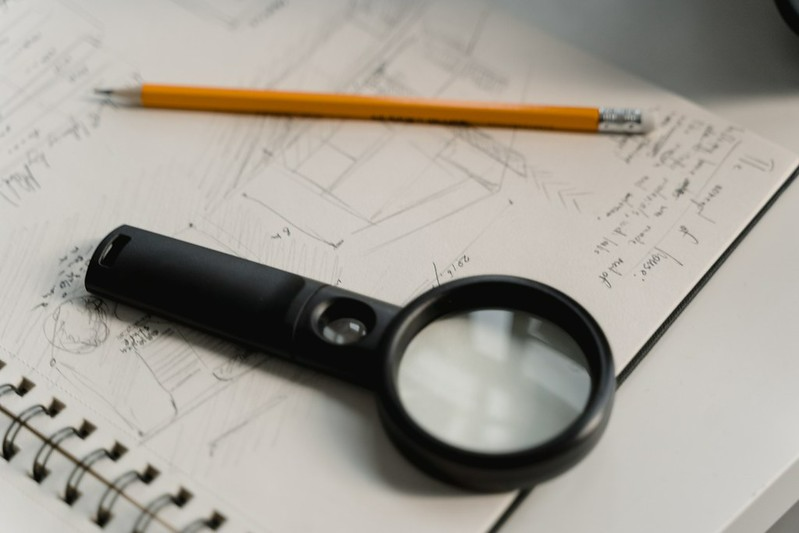Every student knows that any research project is related to the accumulation of data. Striving to produce a genuine and influential paper, the writer should present only valid facts obtained from reputable and scholarly sources. Thus, irrespective of the subject, topic, and other specifications of the work, information is the power that can predetermine the scientific value of the whole project.
At this point, it is indispensable to summon in mind that data acquisition is one of the prerequisite processes that will help you succeed with the task. Therefore, the student should be 100% aware of how to collect data for research projects before the beginning of the work.
How can this phenomenon be defined? What does it presuppose? How can an inexperienced writer prosper with the task?
Data acquisition is a critical process of finding and scrutinizing particular information to offer explication to distinguished issues and estimate the outcomes. It concentrates on searching for the smallest details that are related to the specific case. It will further be used for hypothesis verification and a question explanation. Irrespective of the outcomes for which the information is gathered, the main purpose of this stage is to provide a researcher with an opportunity to predict future tendencies and prospects.
With the development of technology, the process of data acquisition is much simpler and will not take too much time. Nonetheless, it is critical to summon in mind that finding information is not enough, as you should also process it, analyze and conclude.
Why Is the Data Collection Section of the Research Paper Substantial?
Although data accumulation is a complex process that consists of numerous stages, each one of them can influence the final result. While some researchers underestimate the significance of information acquisition, others acknowledge the true value of the process. Why should researchers start their work with data acquisition?
- it can maintain the integrity of the research;
- it will decrease the risk of any mistakes and inaccuracies included in the work;
- it keeps the writer informed of all the aspects of the question;
- it can save the researcher much time and effort needed for the issue acknowledgment.
In fact, these are only a few most important factors that will help you realize the true importance of info accumulation. Keep them in mind as you look through the list of the methods used to collect data.
How to Collect Data for Research
Are you ready to immerse yourself in working on the research project? It is pertinent to start with the research paper outline. Nonetheless, there is no way you succeed with this stage without a deep and profound primary data analysis. Check out the variety of available options and select the best way to collect data and process it avoding plagiarizing.
Primary Data Collection
Primary data that is widely known as raw material, is the one acquired right from the source. In this instance, the writer is the first person to interact with some facts and draw certain conclusions. As mentioned in numerous scholarly sources, the overwhelming majority of info currently available online is not structured and organized, which makes the primary data accumulation time- and effort-consuming.
Nonetheless, once you acknowledge topic-related facts, your task will become much more guided. The data you accumulate is usually classified into qualitative and quantitative research methods:
- Qualitative data analysis. Undeniably, info acquisition is one of the most significant and time-consuming elements of the research project. The writer should be exceptionally attentive not only to the relevance of the facts but also their types. Using the current approach, it is essential to exclude any numbers and calculations. Alternatively, the researcher should focus on the data associated with the description of sensations, emotions, and similar aspects.
- Quantitative research. Unlike the previous method, this one is tightly related to numbers and math equations. The task of the scholar is to conduct distinguished questionnaires and follow other data acquisition techniques in order to obtain certain figures to use in the research project.
Secondary Data Collection
While the primary data collection is associated with first-hand information, this type of work presupposes an analysis of the existing facts. At this stage, the researcher's task is to find as many books, articles, or journals that represent necessary data as possible. It is surely a faster and less costly way to gather the necessary data, but it is less presentational.
Additionally, it is fundamental to remember that the secondary data collection is not as appreciated as the primary one since the task of the student is just to find and scrutinize the already collected and organized facts. Nevertheless, one should remember that this method is not universal and cannot be easily applied to all research projects and formats.
While the primary data collection technique can be adjusted to the type of the research, its nature, and subject, the secondary one is less customizable. Anyway, the purpose of your academic writing, as well as its objectives will predetermine your choice of data accumulation mode.
Different Ways to Collect Data: Top 5 Methods to Take Advantage Of
Writing a research project is a complicated and time-consuming undertaking that will take much effort and determination to be accomplished. The whole work will be divided into numerous stages, with the preparatory one being the basic one. At this point, the researcher should answer the main questions that may become decisive. What are the methods of data collection that can be applied to the particular project? Are there any downsides of the experience that should be taken into consideration?
Before you dive into the process and start choosing between the available types of data collections, you should first differentiate them. According to distinguishing sources, the number of info accumulation patterns may vary from five to seven. Check out the information mentioned below to get the specifications and features of the basic ones, such as:
- quizzes;
- surveys and questionnaires;
- interviews;
- focus groups;
- direct observation.
At this point, it is critical to mention that some of these methods are qualitative, while others are quantitative, so the writer should select the one that meets the project requirements.
Quizzes
Generalized as closed-ended surveys, these are the most typical way to get necessary data. There are two types of similar quizzes, including the ones based on ratio questions and categorical ones.
The first category of questions may contain a rating scale, matrix questions, or similar items with definite values to choose from. The second category, instead, is subdivided into multiple-choice, checkbox, and dichotomous questions.
Pros:
- stimulates participants to respond;
- guarantees maximum anonymity;
- advances the abundance of the information collection.
Cons:
- takes much time;
- costs a lot.
Surveys and Questionnaires
Questionnaires, which are also known as open-ended surveys, offer maximum resilience and independence for their participants. Although this method of info acquisition is more challenging to scrutinize and conclude, it is the most cost-effective one.
Pros:
- the method is exceptionally cost-effective;
- its outcomes are easy to visualize;
- maximum safety of personal information is guaranteed;
- can cover the most extraordinary topics.
Cons:
- answers are not always honest;
- there is no opportunity to gather qualitative data;
- some questions may be ignored by respondents;
- certain remarks may be hard to scrutinize.
Interviews
When it comes to qualitative research, the individual interview seems to be one of the most beneficial data acquisition patterns. As the name implies, the interviewer interacts with the interviewee, asking unambiguous questions necessary for the research. It is inevitable to highlight that this technique is applicable only in instances when highly personalized data should be collected. The method is subdivided into numerous other categories, including conversational, information, formal, and spontaneous interviews. Some of them are faster and more quality, while others require more time and effort to be conducted. Nonetheless, the final result of the activity is surely worth an effort.
Pros:
- effective and personalized information;
- accurate data;
- maximum resilience and independence in answers.
Cons:
- is costly;
- takes much time and effort.
Focus Groups
Unlike the previously mentioned method, a focus group presupposes intercommunication with a few people at a time. Depending on the situation and requirements, the focus group may consist of three to ten people. The main task of the interviewer is to ask questions and listen to the answers of multiple respondents.
Pros:
- the gained facts are usually detailed;
- is cost-effective;
- allows getting much information within a limited period of time.
Cons:
- may include biases;
- demands the professionalism of the interrogator;
- can be hard to process the results.
Direct Observation
This method to obtain data is classified as a passive, qualitative one. The researcher’s main task here is to detect the situation and everything that is going on around. The scholar should not participate in the happening, but should obligatorily be involved, taking notes and making videos for their future scrutiny.
Pros:
- accurate data only;
- it is a universal method;
Cons:
- some actions and things are difficult to observe;
- there is a risk of collecting biased facts;
- it may be costly.





